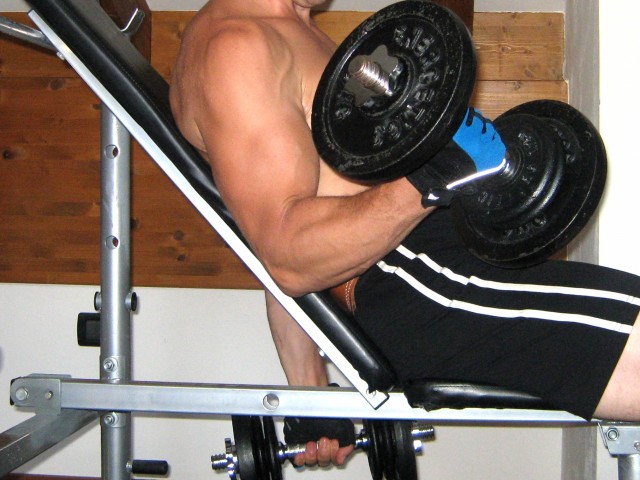Natural Anabolic Hormones: Build Muscle Naturally
Natural Anabolic Hormones and Endogenous Production
Natural anabolic hormones are endogenous hormones, those produced by the body, that are capable of increasing muscle mass. In contrast, anabolic steroids are synthetic chemical compounds that mimic the action of natural hormones, accelerating muscle mass and strength gains. However, these synthetic substances are extremely harmful to the body, causing irreversible damage primarily to the liver and kidneys and carrying a high cancer risk.
Additional side effects of anabolic steroids include increased LDL cholesterol, elevated blood pressure and cardiovascular damage (e.g., atherosclerosis). They can also cause severe problems to the male reproductive system, such as testicular atrophy and a higher risk of prostate and testicular cancer. Women who take anabolic steroids may experience increased body hair, menstrual irregularities, breast atrophy and a deeper voice.

The Most Important Natural Anabolic Hormones
The natural anabolic hormones of greatest interest to fitness and bodybuilding enthusiasts are those that increase muscle mass and help burn excess fat. The key hormones include:
- Testosterone
- Growth Hormone (GH)
- IGF-1 (Insulin-like Growth Factor 1)
- Insulin
How to Naturally Stimulate Anabolic Hormone Production
Hormone levels can be naturally increased through proper training, a balanced diet and adequate rest. These three pillars: exercise, nutrition and sleep, work together to optimize endogenous hormone production.
Training and Hormonal Stimulation
Short, intense workouts are the most effective for triggering testosterone release, the hormone with the most powerful anabolic effects on muscle and skeletal systems. High-intensity training also boosts GH levels, which plays a crucial role in protein synthesis and muscle development. After adolescence, GH primarily supports fat metabolism, promoting fat burning and lean muscle gain.
The ideal workout should last 40–50 minutes, with weights at 70–80% of your one-rep max (1-RM). Each set should consist of 6–12 reps, with short rest periods between sets. Aerobic training should not exceed two hours per week, as prolonged sessions increase cortisol, the stress hormone, which inhibits testosterone production and promotes muscle breakdown.
Stretching between sets can stimulate IGF-1, a liver-produced peptide hormone with insulin-like anabolic activity, encouraging cellular growth and muscle development.
Natural Anabolic Hormones: The Anabolic Diet
Nutrition plays a critical role in muscle growth, but the myth of high-protein diets needs to be debunked. Although such diets are often promoted for muscle building, they can be harmful. Protein intake should not exceed 2 grams per kilogram of body weight or 30 grams per meal, as the body cannot metabolize more than that at once. Excess protein stresses the liver and kidneys, can be stored as fat and increases the risk of certain cancers.
While diet plays a secondary role in hormone stimulation, a high-protein, low-carb approach can influence both testosterone and GH levels. It’s worth noting that testosterone is produced from cholesterol in the testes and naturally decreases by about 1% each year after age 30.
Insulin, on the other hand, needs careful monitoring, as it is primarily an anabolic hormone for fat tissue. Stimulated by elevated blood sugar, insulin transports glucose and with it, other nutrients like proteins, into fat and muscle cells. During bulking phases, insulin can help shuttle nutrients to muscles, but chronically high levels reduce testosterone.
The Importance of Sleep
Quality sleep is vital for maintaining high testosterone levels. GH production peaks during the first few hours of deep sleep, making rest essential for hormonal health.
Natural Testosterone Boosters
Testosterone production depends heavily on adequate sleep and can also be influenced by diet. A small portion of testosterone is converted into estrogen, the primary female hormone. Zinc helps inhibit this conversion and is crucial in any athlete’s diet, especially bodybuilders. Zinc-rich foods include beef, pork, lamb, egg yolks, aged cheese (especially Parmesan), mushrooms, yogurt and peanuts.
Meat consumption is important for testosterone synthesis and whey protein taken before training can help maintain optimal testosterone levels. Post-workout, consuming vitamin C-rich fruits (oranges, kiwis, lemon juice) helps deliver simple sugars to muscle cells via insulin, reducing cortisol levels and preserving testosterone. Vitamin C also directly inhibits the catabolic hormone cortisol.
Vitamin B3 (niacin) also supports testosterone production and can be found in pork, beef, veal, chicken, turkey, liver, fish, peanuts, dates and brewer’s yeast.
Insulin
Insulin is an anabolic hormone that primarily promotes fat storage and is stimulated by carbohydrate intake. Its job is to transport glucose into muscle cells, fat tissue and the liver. Higher insulin levels generally correspond to lower testosterone, which is why managing blood sugar is important for hormonal balance.
GH – Growth Hormone
GH is another key anabolic hormone. It promotes protein synthesis, supports the transport of proteins to tissues and encourages lipolysis (fat breakdown), helping the body use fat as energy and preserve muscle proteins. The result is an increase in lean mass and reduction in fat.
GH is produced by the pituitary gland, with peak production occurring in the early hours of sleep. A high-protein, low-carb diet helps stimulate its release. Physical and emotional stress, as well as exposure to heat, can also trigger GH secretion.
High to moderate-intensity training with short rest periods maximizes GH release. For bodybuilding, free weights are recommended over machines because compound movements (e.g., bench press, squats) engage multiple muscle groups, boosting GH production more effectively.
Start your workouts by targeting large muscle groups (quads, chest, back) to achieve a GH peak about 25 minutes into your session. This maintains high hormone levels even when training smaller muscles like biceps and triceps. Keep sessions under 75 minutes to avoid cortisol spikes that hinder muscle growth.
Allow at least five days of recovery between workouts for the same muscle group to ensure full repair and progressive gains in size and strength.
